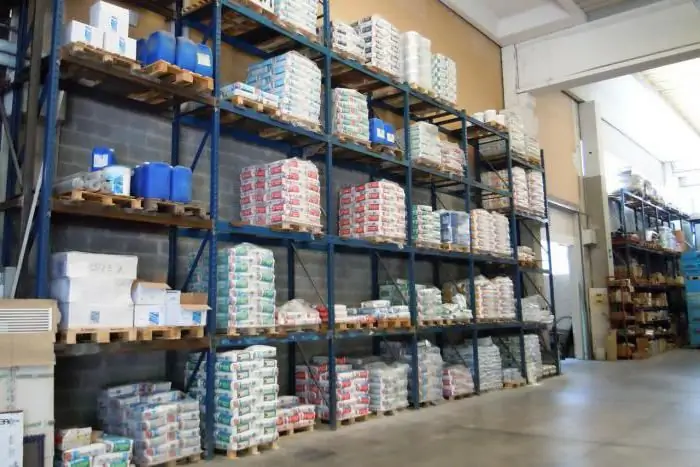2025 Author: Howard Calhoun | [email protected]. Last modified: 2025-01-24 13:10:39
An investment project is calculated for each stage of construction work. It describes in detail all the materials, work and their pricing necessary for the construction of the building. This detailed calculation has its own name - the estimated cost of construction.
Definition
Estimated cost is the amount of funds needed to erect a building. It includes the cost of financing construction, payment for contract work, the cost of purchasing equipment, its delivery and installation. Based on the estimate documentation, reporting and evaluation of the activities of construction and installation organizations are formed.

Estimated cost is the basis for calculating the book value of commissioned facilities. It is calculated based on:
- Working documentation, drawings, construction work sheet, construction sequence, explanatory note to materials.
- Current regulations, selling prices for equipment and inventory.
- Decisions of government agencies on the relevant building.
Calculation methods
Definition of the estimatedcost is carried out by the resource, index or base-index method. In the first case, the ratio of the current prices for resources with the norms of their costs is calculated. At the same time, the index method provides for a combined calculation. Resources for which market prices are available are accepted at weighted average rates. For all other materials, an index of the estimated cost of the contractor is established. If there is none, then the coefficients approved by government agencies are used. Estimated cost recalculation indices are updated every quarter. The basic method provides an economic justification for the calculated indices by cost elements.

Structure
The estimated cost of construction is formed from the costs of:
- building construction;
- purchase and installation of equipment;
- other expenses.
Let's consider each of the elements in more detail. Construction work includes general construction work (stone, earthwork, plastering) for the erection of a building and the installation of structures. This also includes internal and external engineering arrangements (water supply, ventilation, sewerage, etc.).
The second group includes the installation of equipment, the connection of technological wiring, power supply. The estimated cost of construction and installation works includes the cost of purchasing and transporting materials, margins of the supply department, calculated at base prices. The group of other costs includes design costs, staff training, maintenanceconstruction team, organization and conduct of tenders, etc.
Types of estimates
The total cost of work is formed from local estimates, costing of objects, individual works, summary calculations. A local estimate is a primary document that is drawn up for general site work based on the volumes specified in the drawings. This includes direct, overhead and planned costs.
Calculation by objects is formed on the basis of the local one. It contains such indicators as the amount of wages, the cost of operating machines, the cost of structures and inventory, transportation costs, overhead costs. If only one type of work is performed, then there is no need for such a detailed cost estimate.

Objective estimates include summary reports on the preparation of the construction site, personnel, main facilities, utility buildings, service buildings, energy facilities; constructions of water, heat and gas supply, sewerage; landscaping; implementation of technical supervision over the facility; other works. A separate line displays the amount of unforeseen expenses. The calculation of the estimated cost is carried out on the basis of all the above estimates.
Financials
Changes in the estimated cost may be due to both unforeseen costs and changes in resource prices. Therefore, at the design stage, the total need for investments is calculated: O \u003d Spr + Ssmr + Int + Spr.
In this formula, Spr is the calculation of design and survey work, Csmr is the price ofconstruction and installation works, Sob - an estimate for the installation of equipment, Spr - the amount of other expenses. This is how the cost of erecting a building is determined.
Participation of construction organizations reflects the CCM coefficient. It is based on the general price formula: Ccmr=Cost of work + Profit=Materials + Wage + Equipment depreciation + Profit

Types of prices
The estimated cost is the planned cost. It is calculated on the basis of indexes, by category or by manufacturers' purchase prices. Prices for products are formed depending on the location of the cargo at the time of its delivery to the consumer:
- supplier warehouse;
- vehicle (FTS);
- departure station (SVO);
- destination station (VSN);
- on-site warehouse;
- construction site.
Each of the listed types includes expenses of the previous type, as well as an additional cost item. The price of the supplier's warehouse includes the costs of manufacturing and storing materials. The Federal Customs Service takes into account the costs of loading materials into a truck, VSO - the supply of a wagon, VSN - the delivery of material to the pier. The last two types of prices involve the cost of transporting raw materials to an on-site warehouse or construction site.

Pricing
The price is set per unit of raw material. It is calculated by the formula: Tssm=OP + T + SB + TM + TR + S. Here OP is the wholesale price of materials, T is the cost of packaging, SB is sales margins, TM- customs duties, TR - shipping costs, C - storage costs.
Wholesale prices of raw materials and containers are taken from collections or price lists of manufacturers. Sales margins are taken into account as a percentage of prices. Shipping costs are based on the gross weight. Warehouse costs are as follows: building materials - 2%, metal structures - 0.75%, equipment - 1.2%.

Estimated prices for the transportation of goods are presented in the collection of the same name. It consists of two parts: rail, road and sea transportation. Each of them, in turn, contains tariffs for loading and unloading goods, depending on the packaging and mode of transport. The recalculation of the estimated cost in terms of transportation costs (per 1 ton) is carried out according to the following algorithm:
- Determine the type of selling price for the collection.
- Specify the type of transport.
- If this is a railway transportation, then the type of shipment is determined, the tariff is indicated, the loading rate.
- The calculated amount is multiplied by the conversion factor from net weight to gross weight.
- For road transportation, the tariff, cargo class and surcharges are indicated.
- The correction factor for loading and unloading operations is calculated.
- Determine transportation costs.
- The total amount of expenses for 1 ton is calculated.
Materials are divided into imported (cement, metal, pipes, glass, etc.) and local (brick, reinforced concrete structures, mortar, crushed stone, etc.). Shipping cost for the first group of goodshigher than the second.

Labor costs
The estimated cost is a calculation of not only the cost of materials, but also labor resources. Salary is determined based on the tariff-qualification guide. It presents the rates by category. Bonuses for work in difficult and harmful conditions range from 12% to 24%. The algorithm for calculating labor costs is as follows:
- Resource method: Salary=(Actual salary avg. mon.) / (Av. mon. number of working hours).
- According to the estimated value: 3salary=(S + M) ∙ I. Here S and M are the sum of the costs of the facility for the remuneration of construction workers and machine operators, I is the index of the level of expenses.
- Cost allocation: Salary=T((S1KKdKrKp+P) / Number of hours of work). In this formula, T is the labor costs for performing a specific task, C1 is the wage rate of a worker of the 1st category, K is the wage coefficient, Kd is the coefficient of additional payments, Kp is the district coefficient, Kp is the bonus coefficient, P is other payments made at the expense of salary.
This is the order in which labor costs are determined.
Recommended:
Business plan: fast food from scratch. Actions and stages, estimated costs and payback

The catering business is always relevant. Many aspiring entrepreneurs often choose the fast food industry for themselves. The main reason for this choice is the ever-growing demand for restaurant products, as well as the low cost at the start of the business. Even a high level of competition will not interfere much here. The main condition for a successful start is a well-written business plan
How the cost of a service is calculated: an example of a calculation. Service cost

Description of the technology for compiling the cost calculation and listing the constituent data for the calculation. An example of calculating the cost of some public services
How much does it cost to enter into the driver's insurance without experience. How much does it cost to include a person in insurance?

Sometimes it becomes necessary to make changes to the OSAGO policy. For example, indicate that another person can drive the transport. About how much it costs to enter into the insurance of a new driver and how to do it, read the article
How is the value of an apartment estimated? Property valuation. Cadastral valuation of real estate

Very often in a person's life there are circumstances that force him to make transactions with his own apartment. For example, when he moves to another city or intends to take out a loan
WACC is a measure of the cost of capital. Cost of Capital WACC: Examples and Calculation Formula

In the modern economic system, the property of any company has its own value. The control of this indicator is important for the choice of the organization's action strategy. WACC is a measure of the cost of capital. The formula of the indicator, as well as examples of its calculation will be presented in the article

